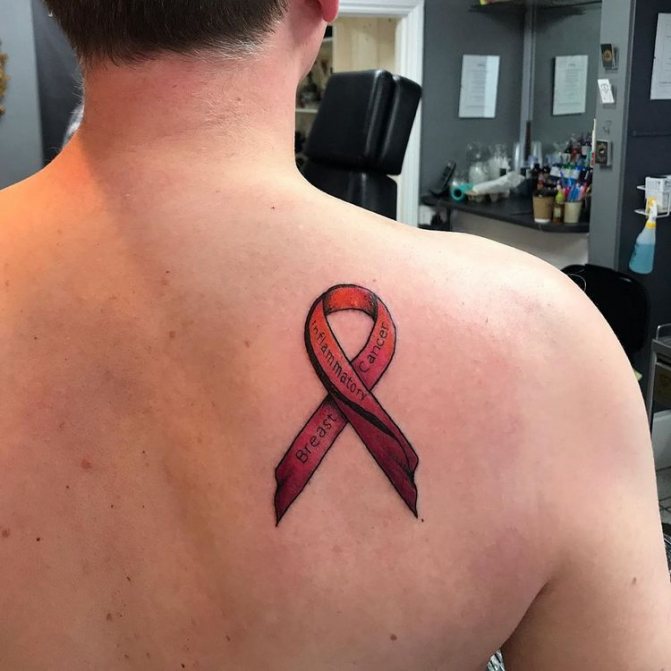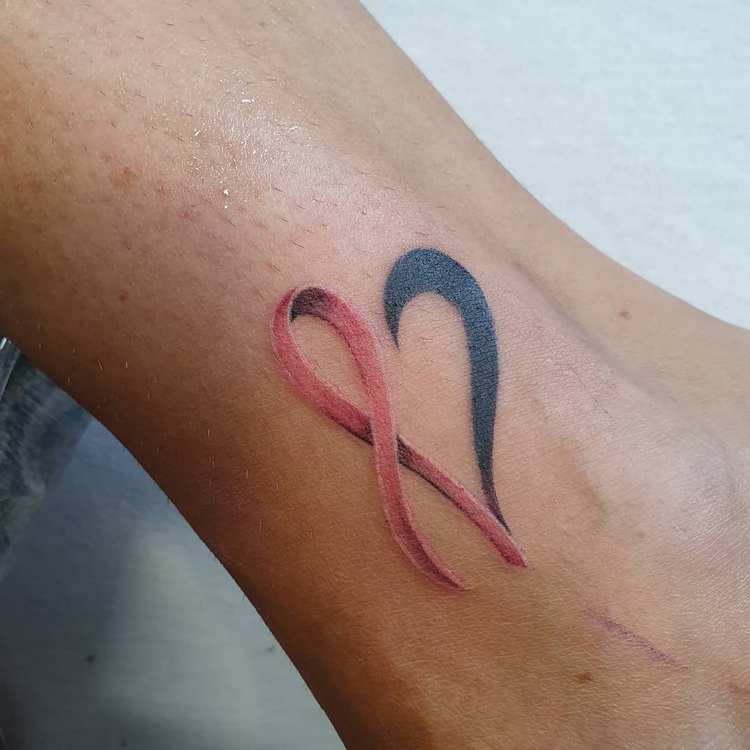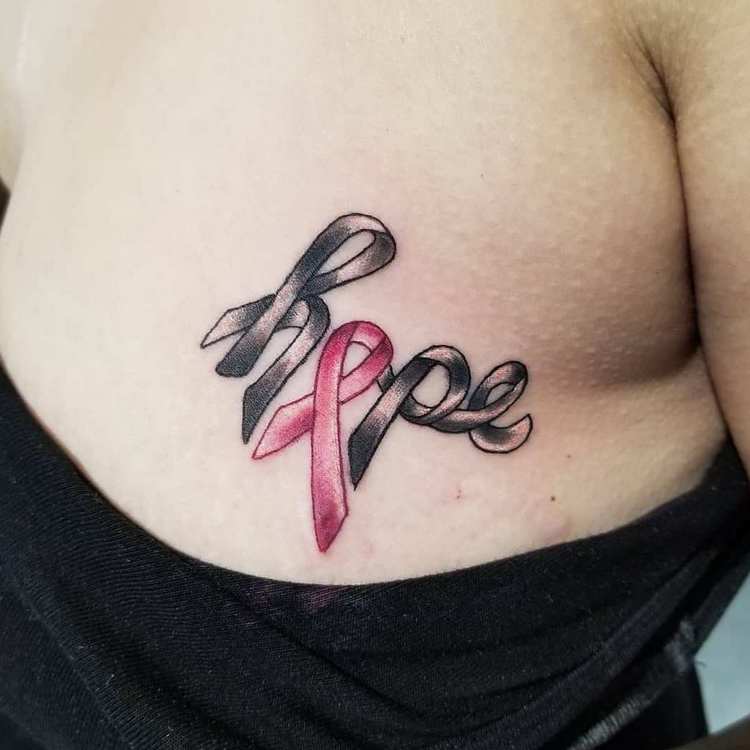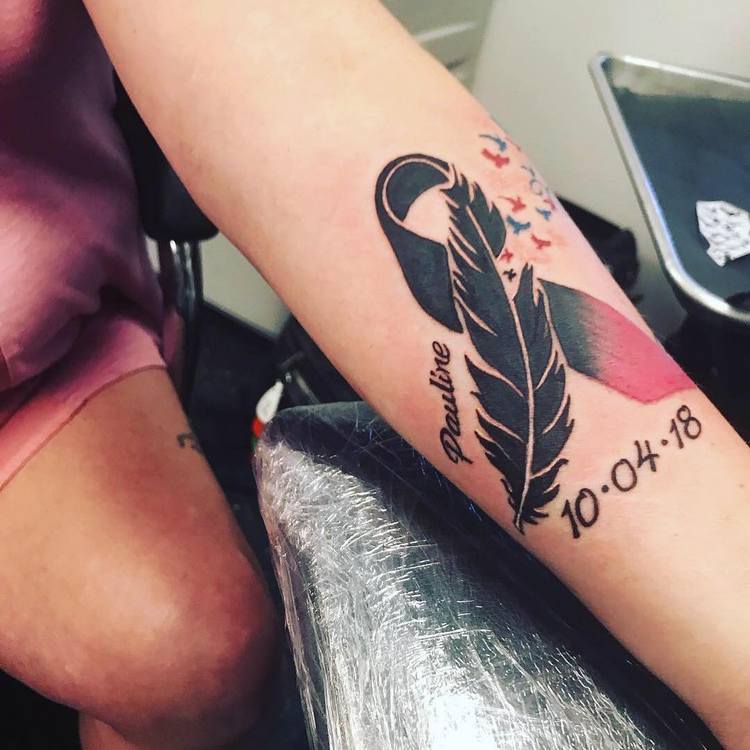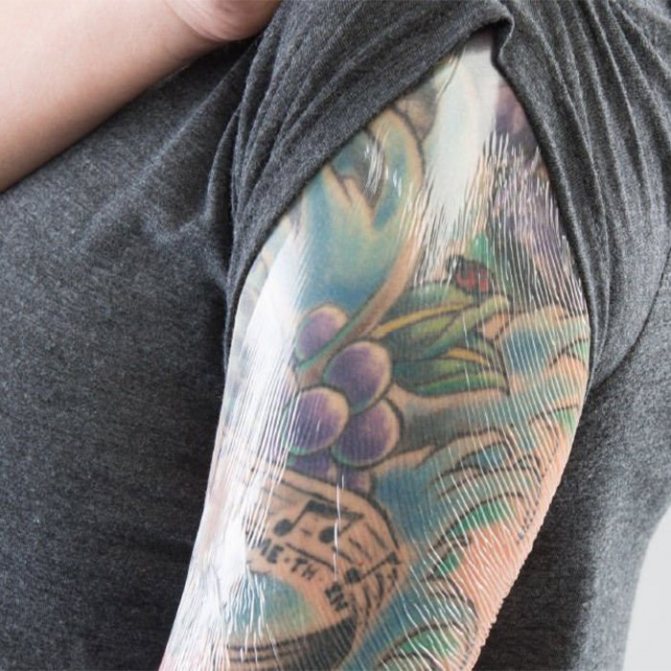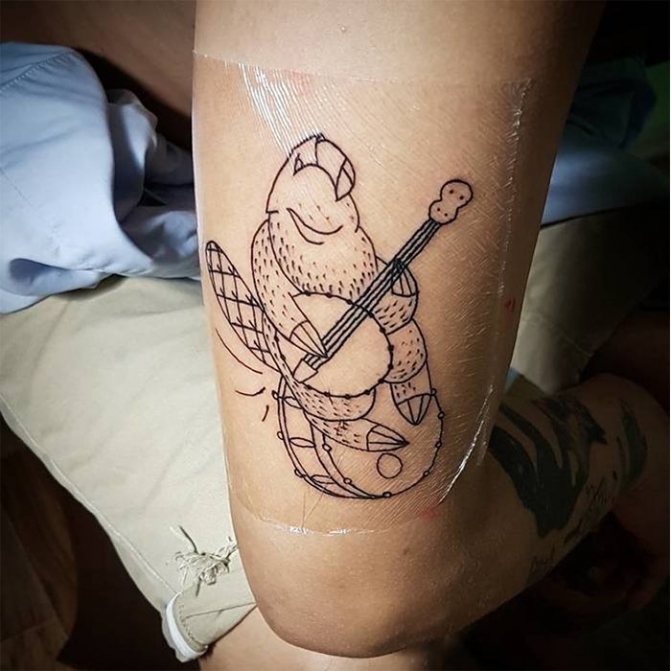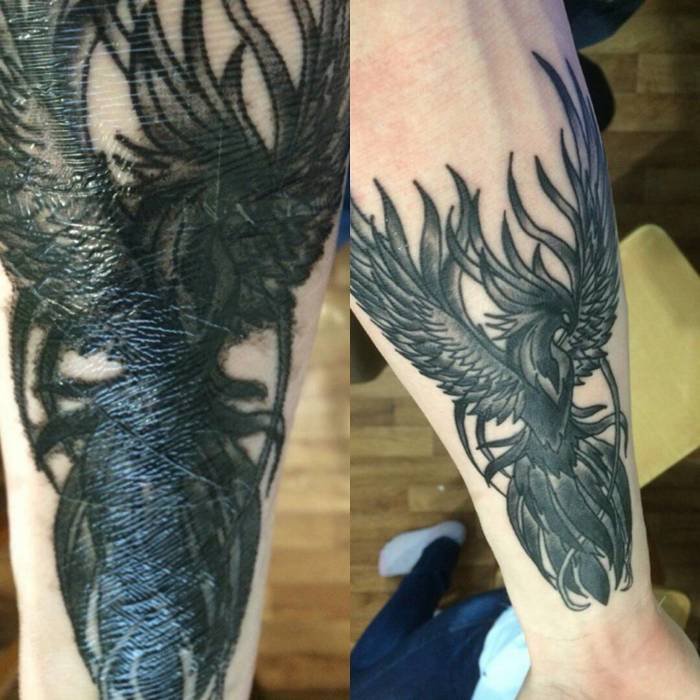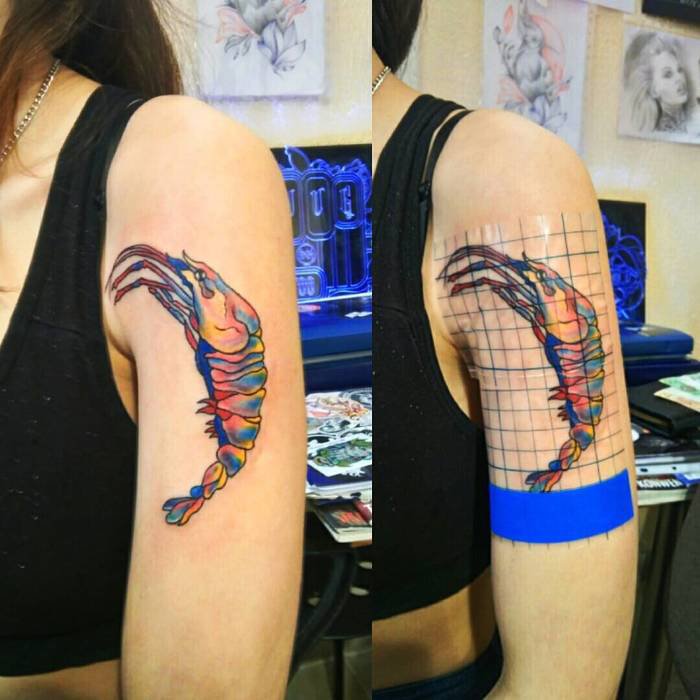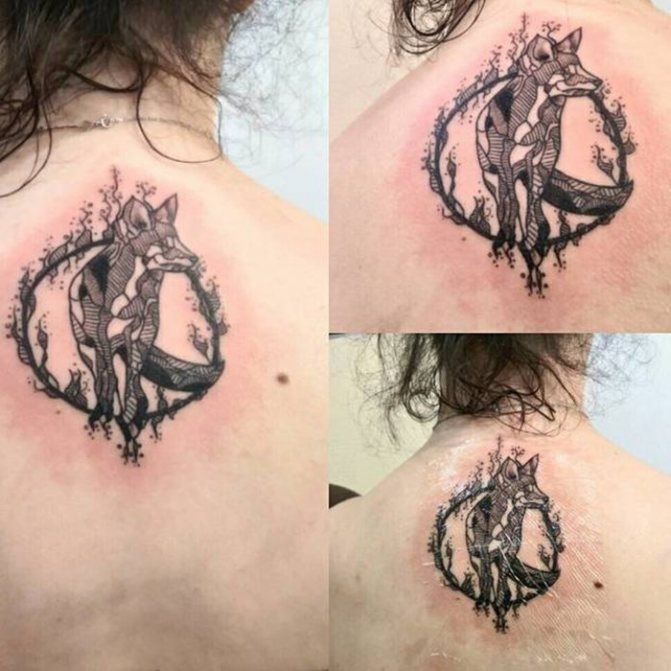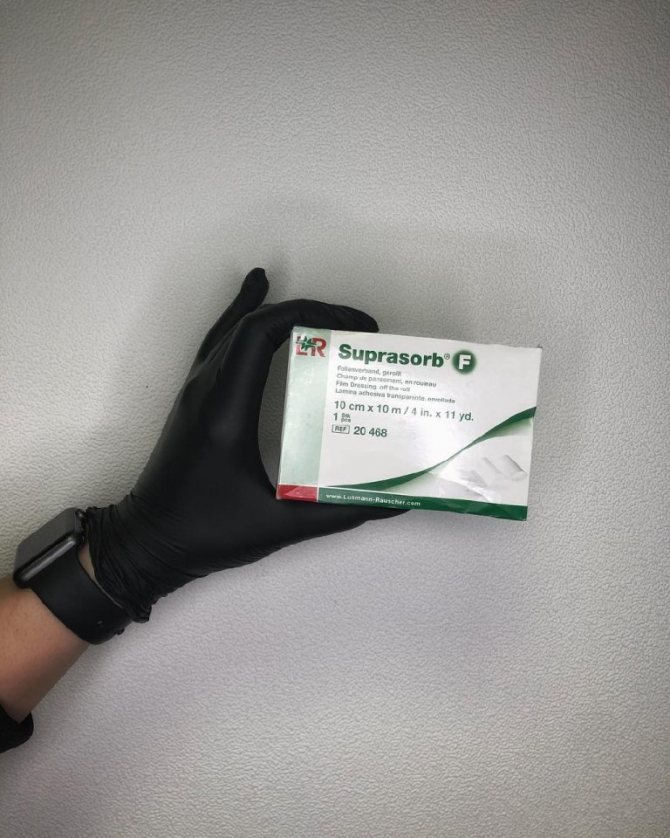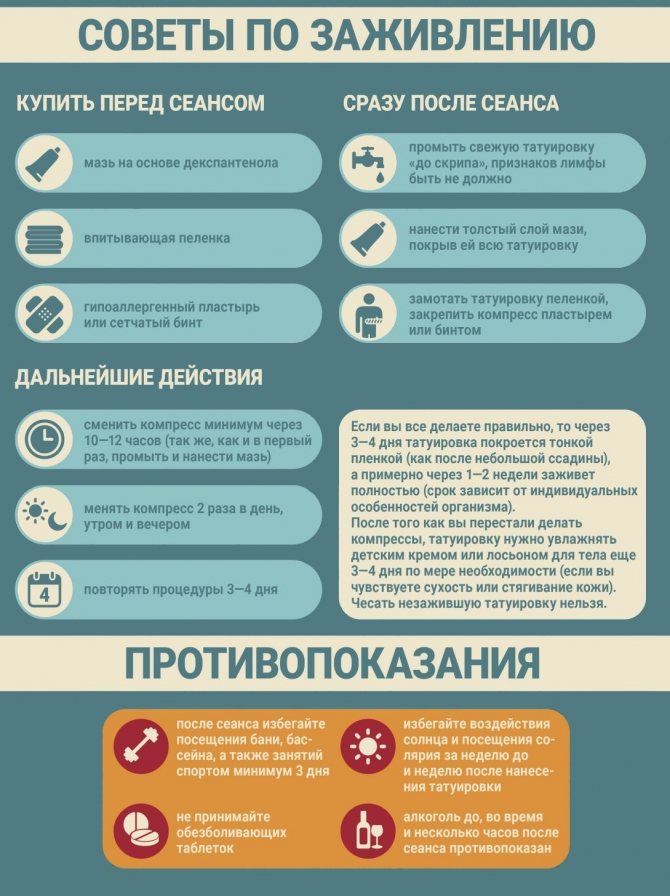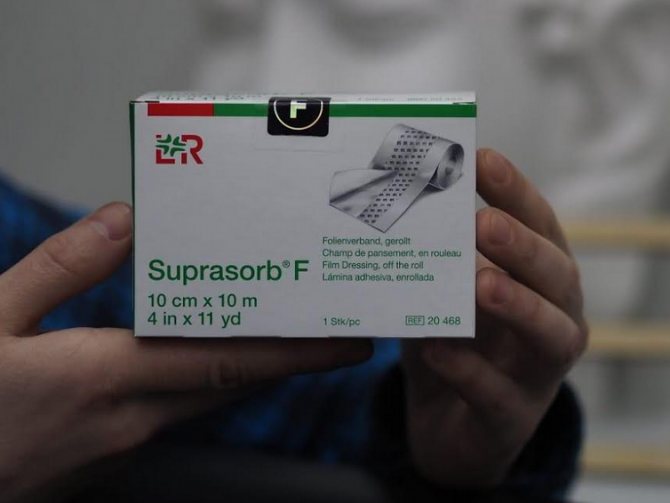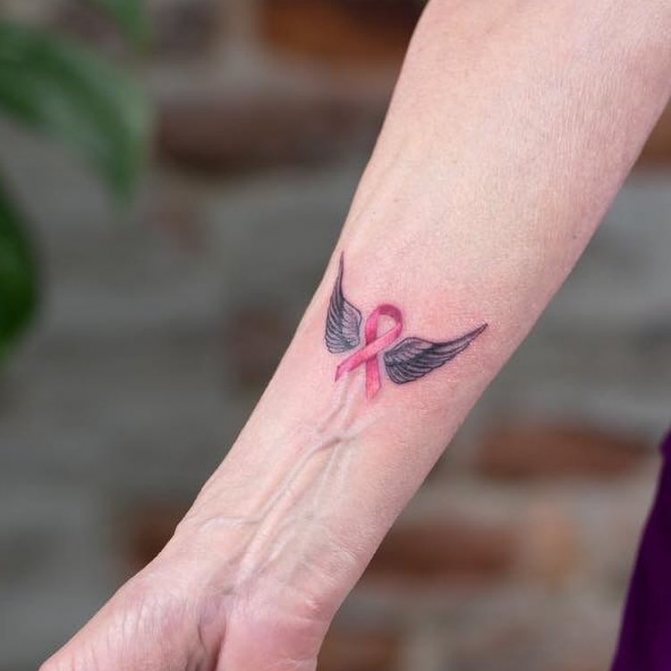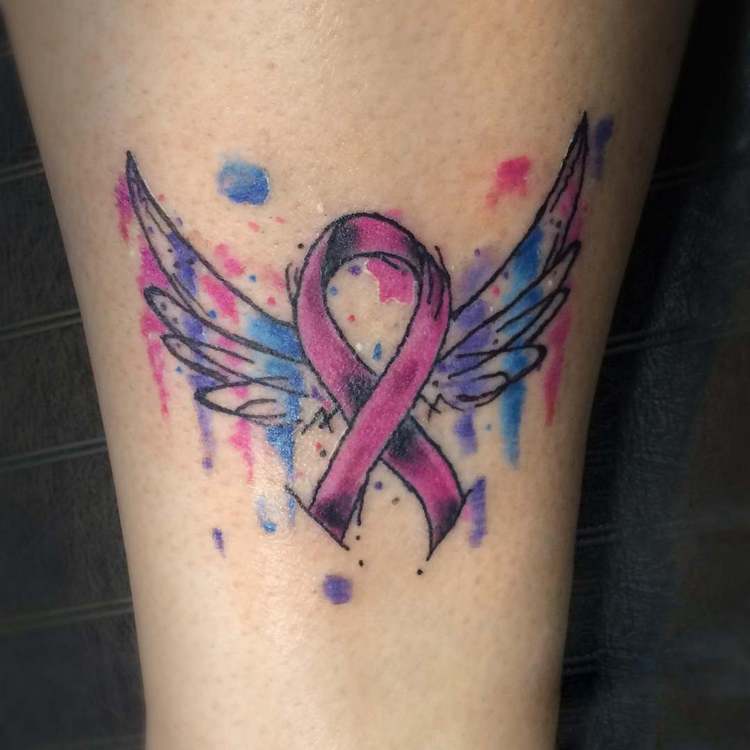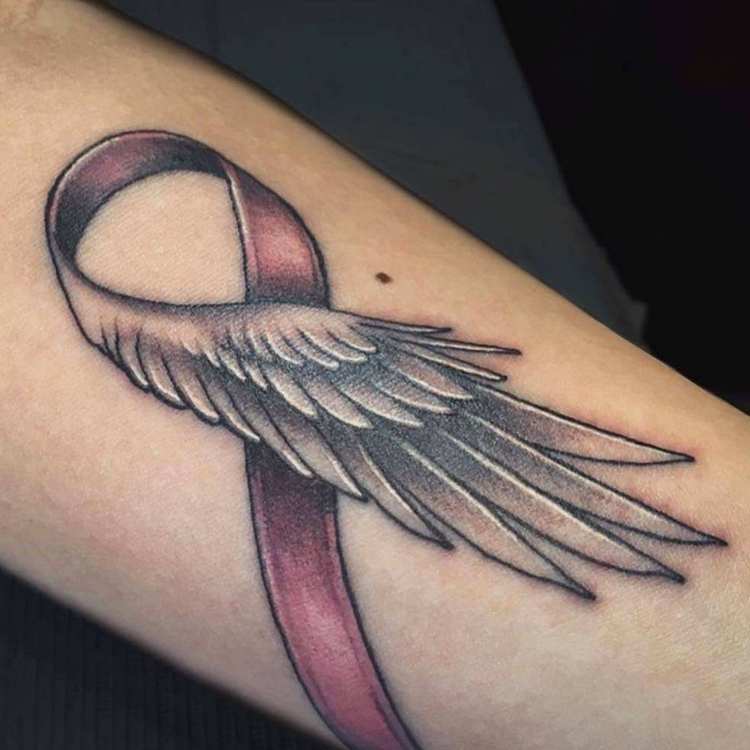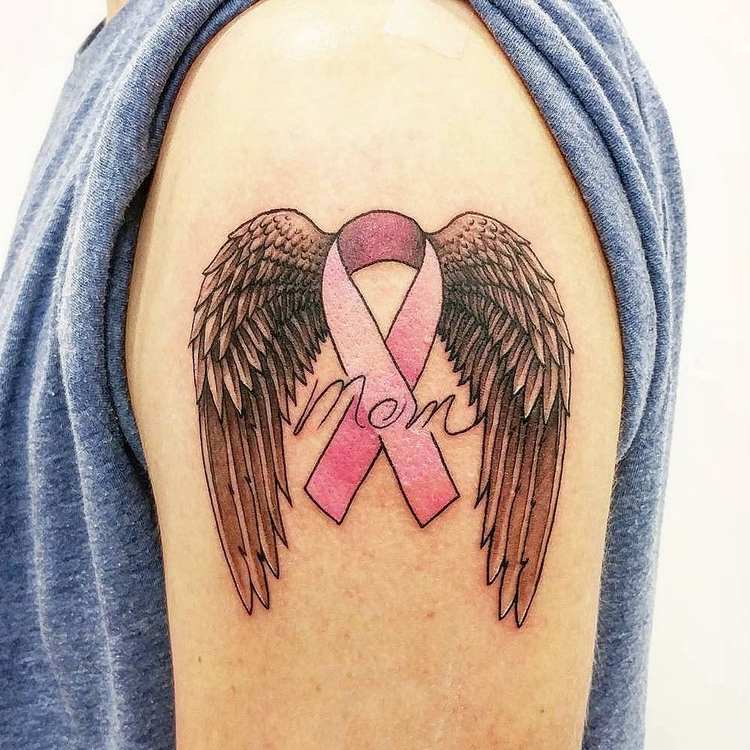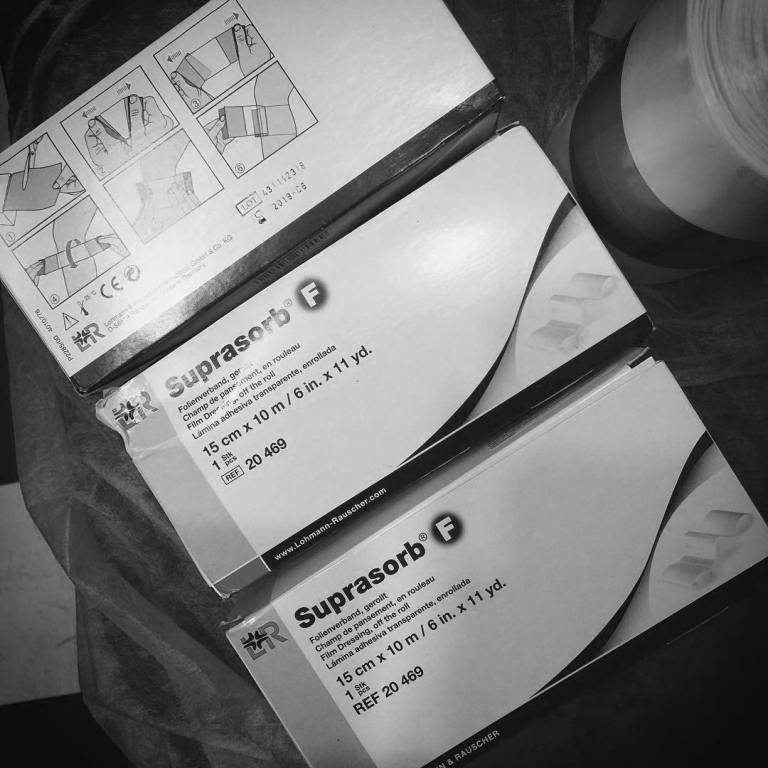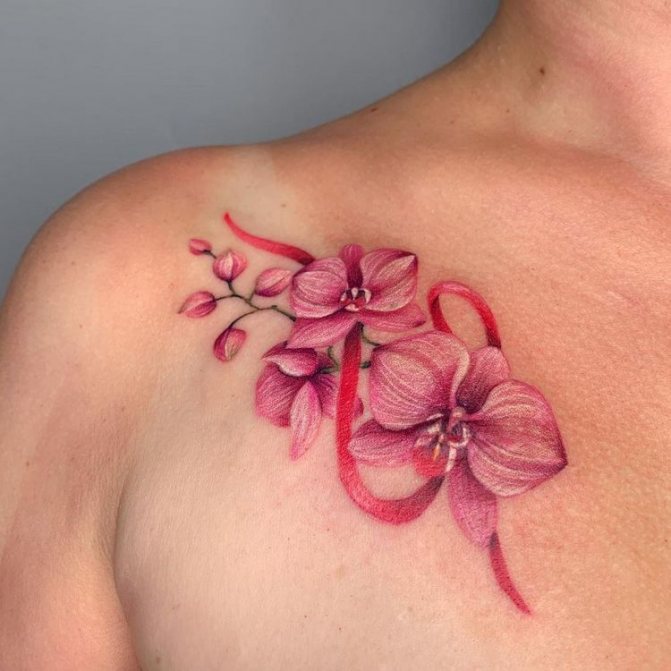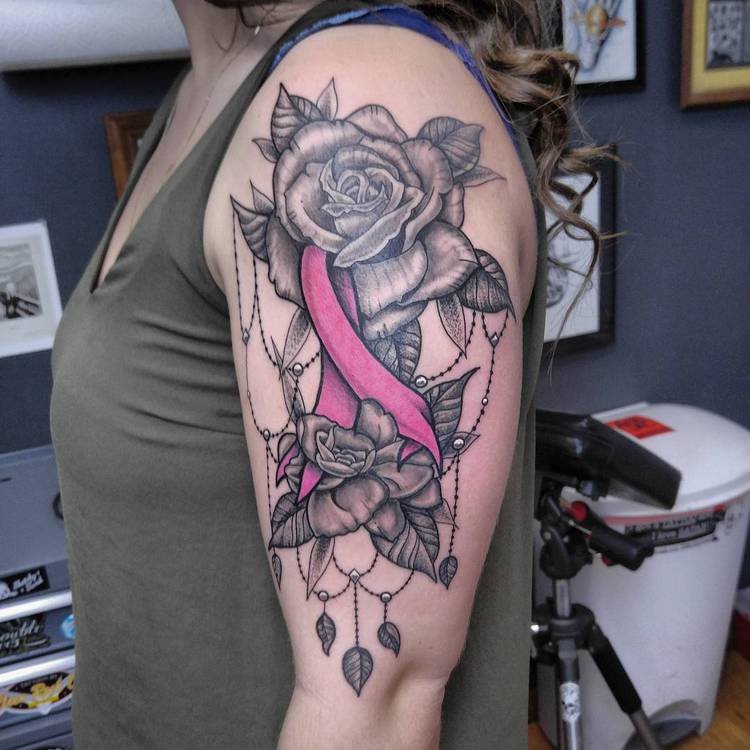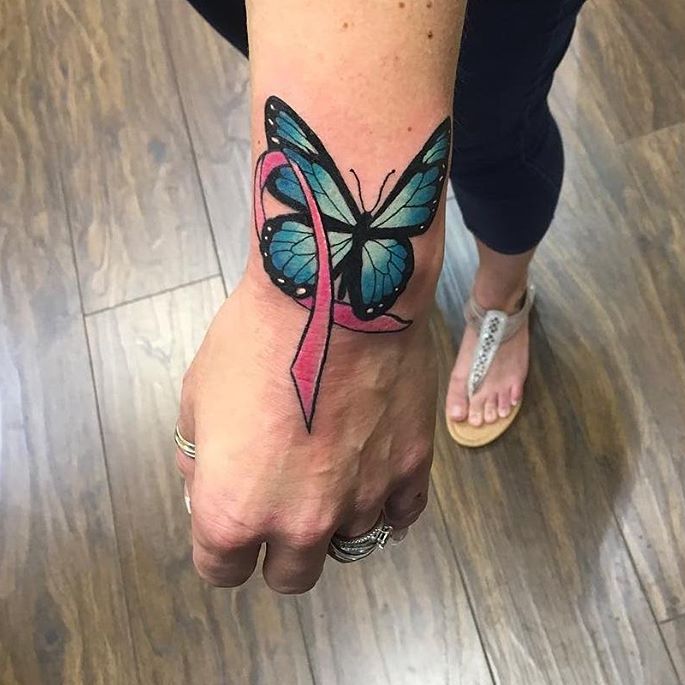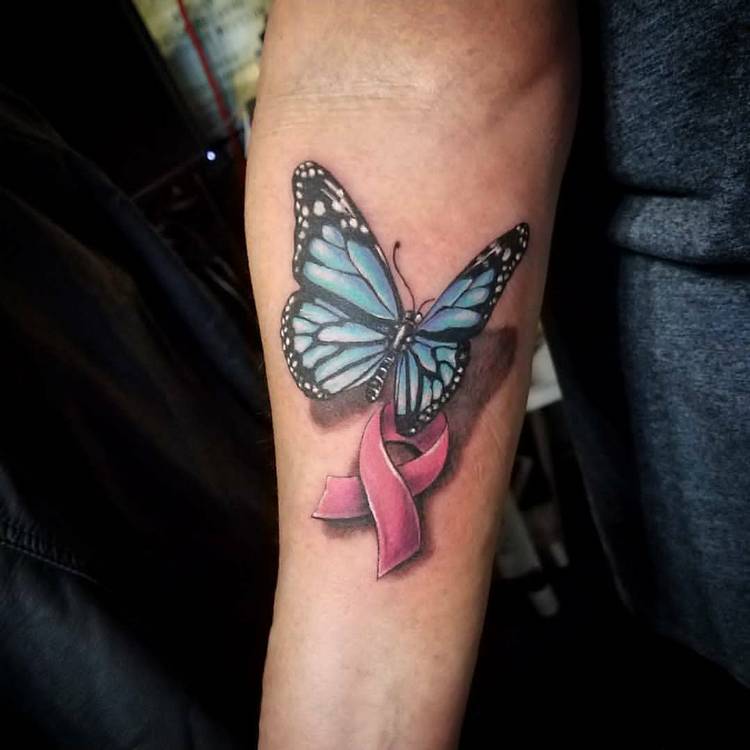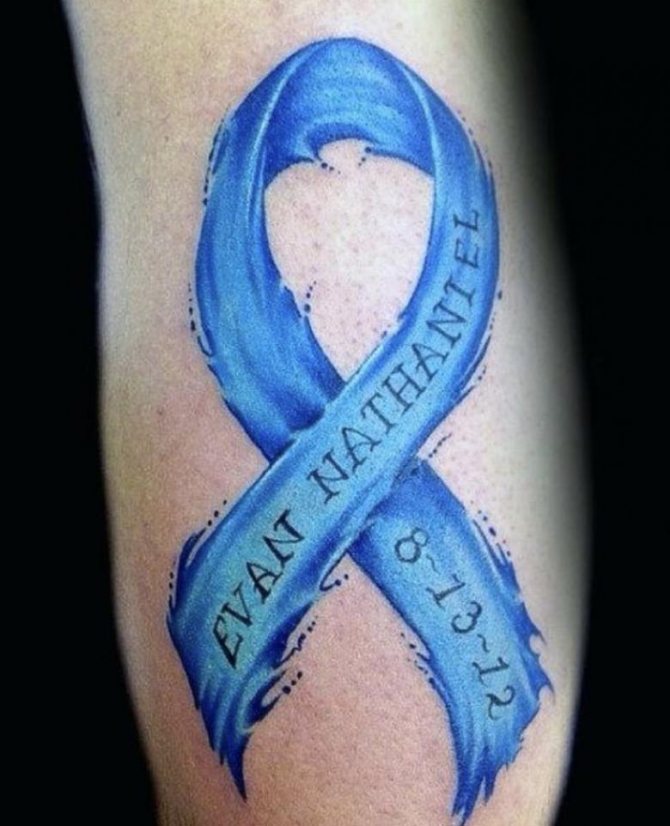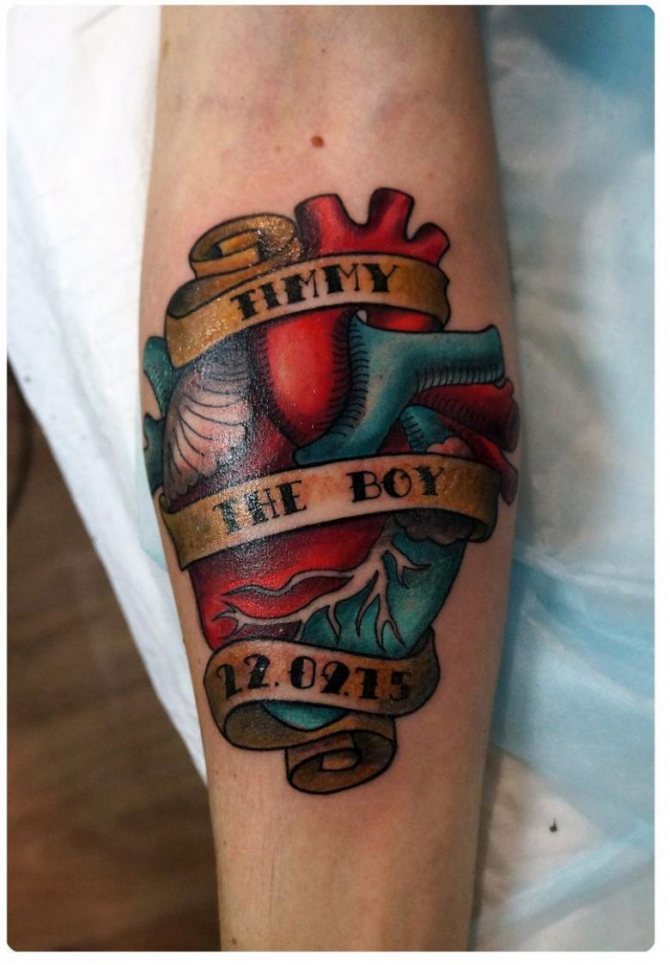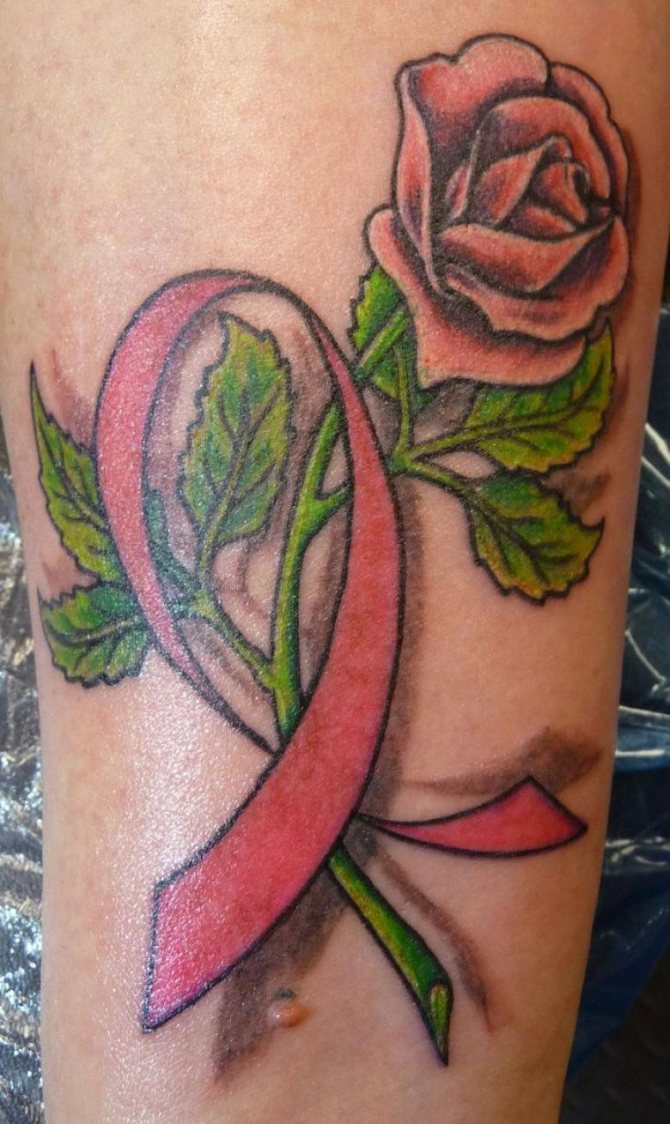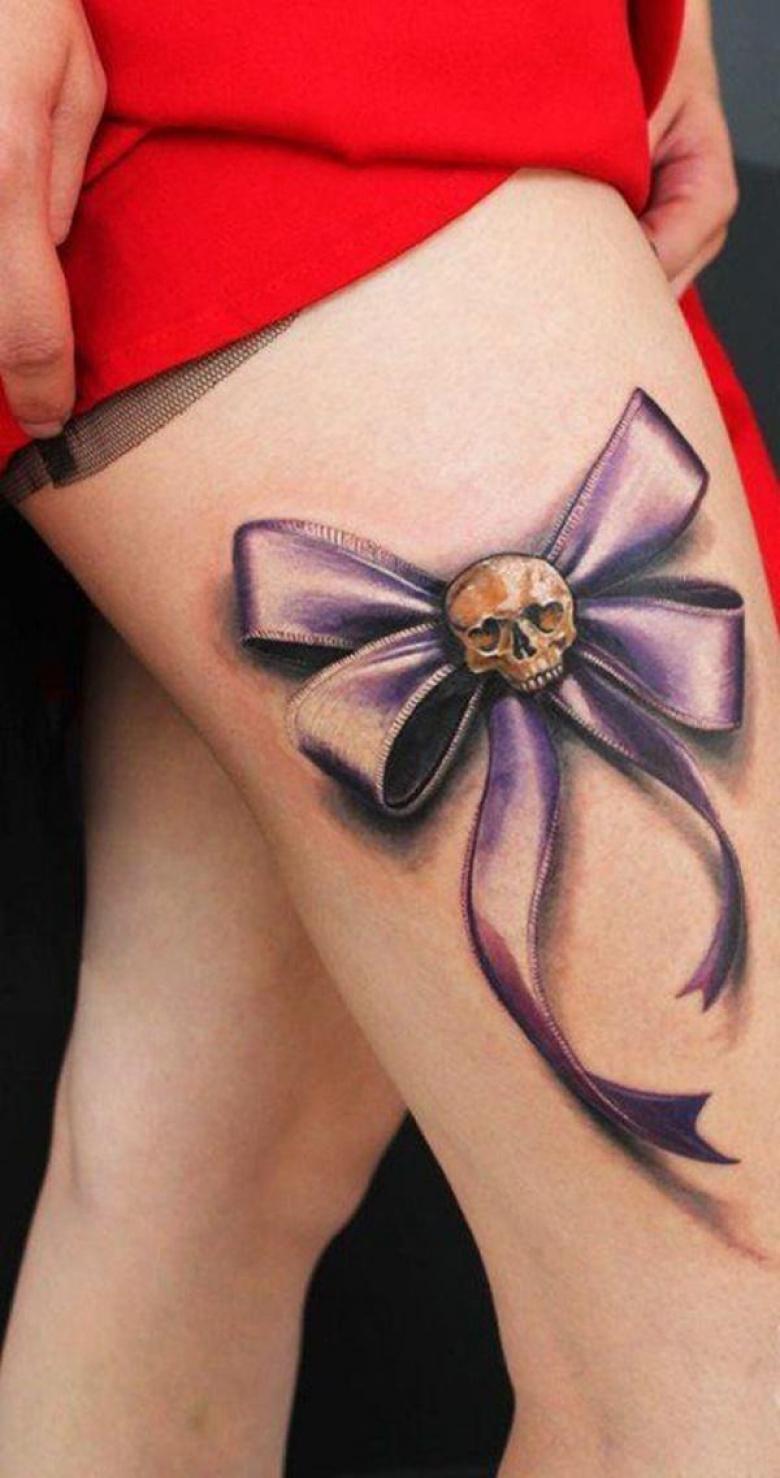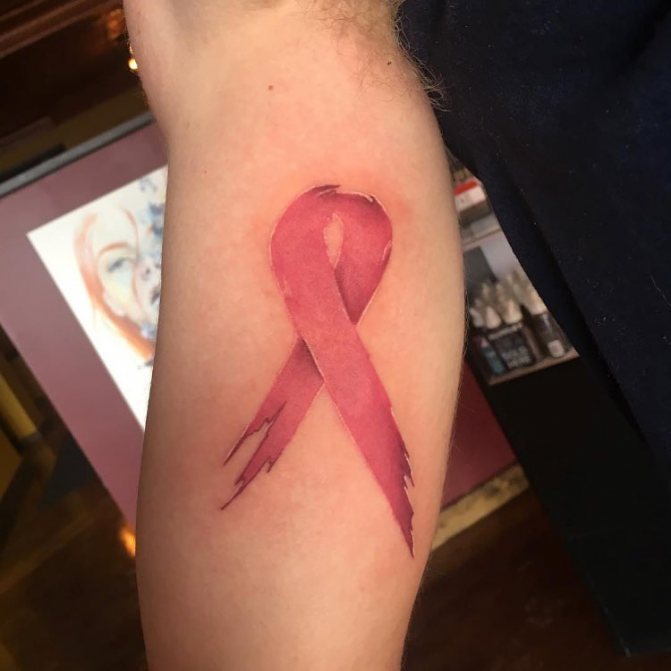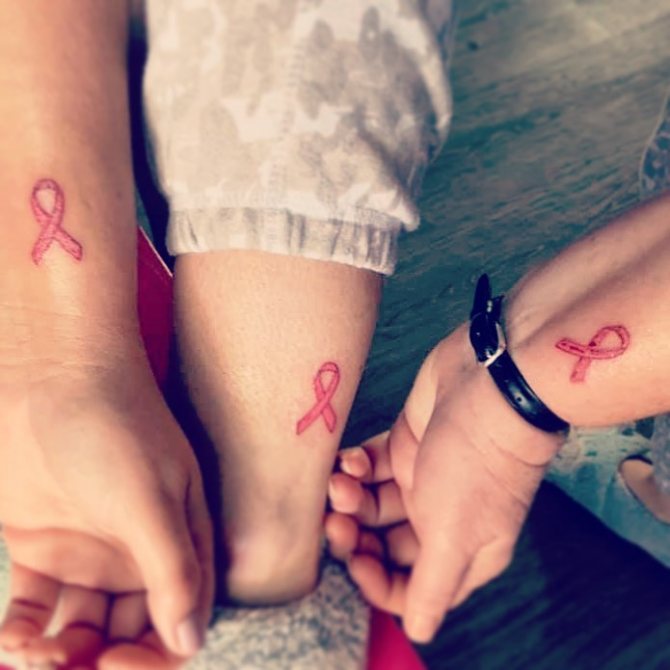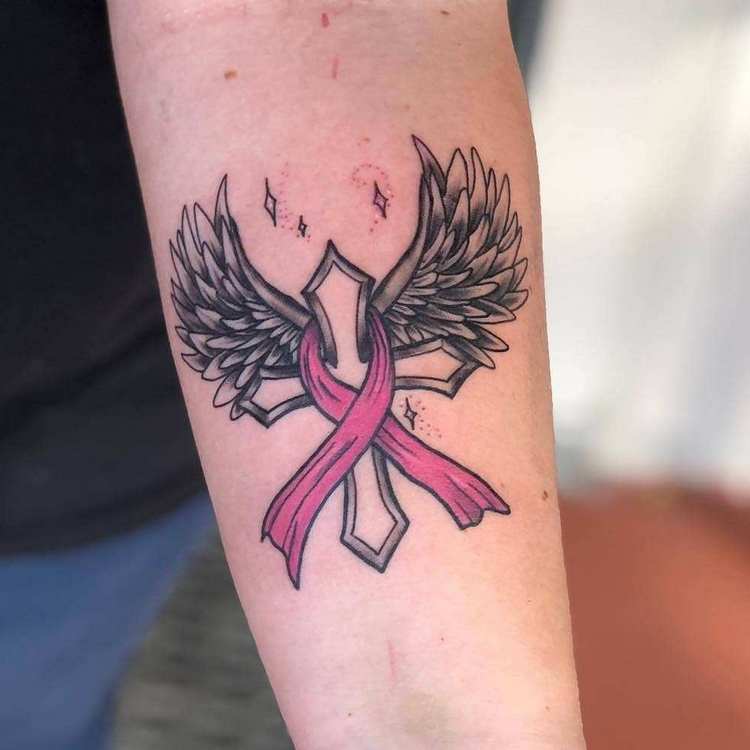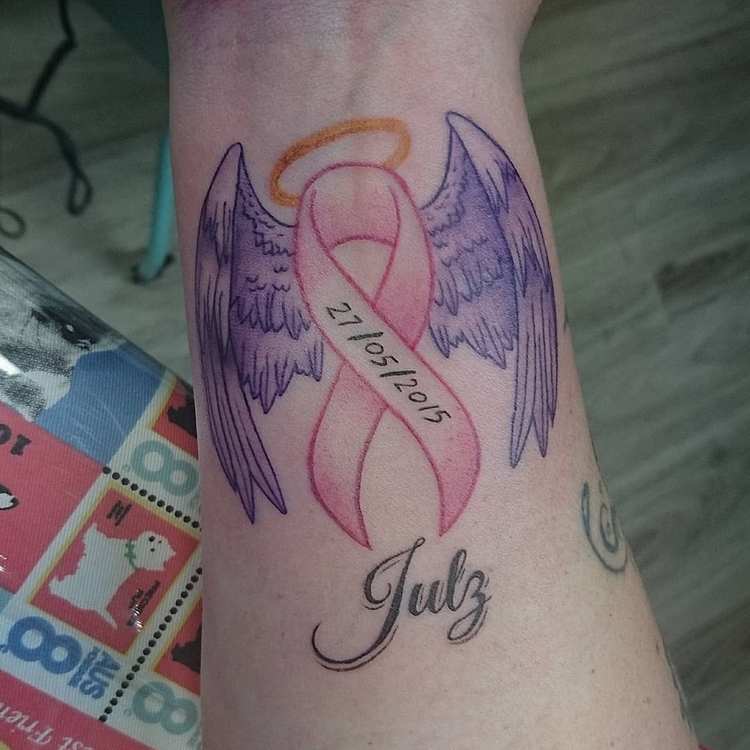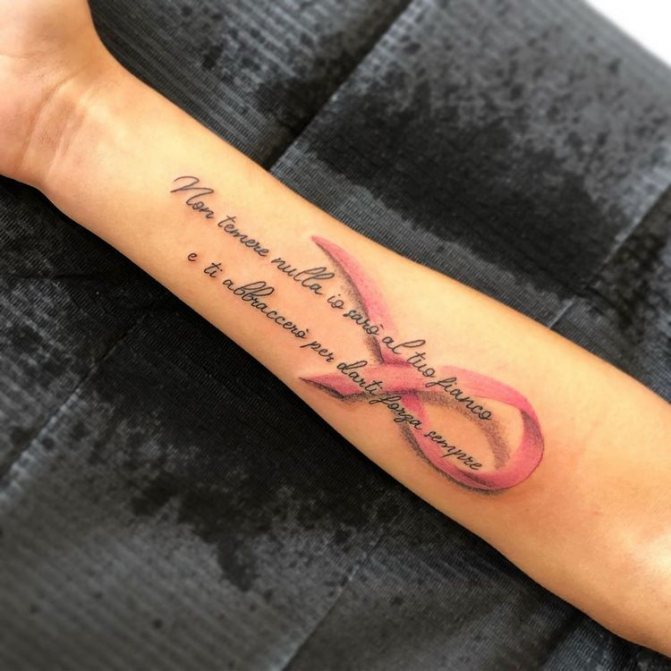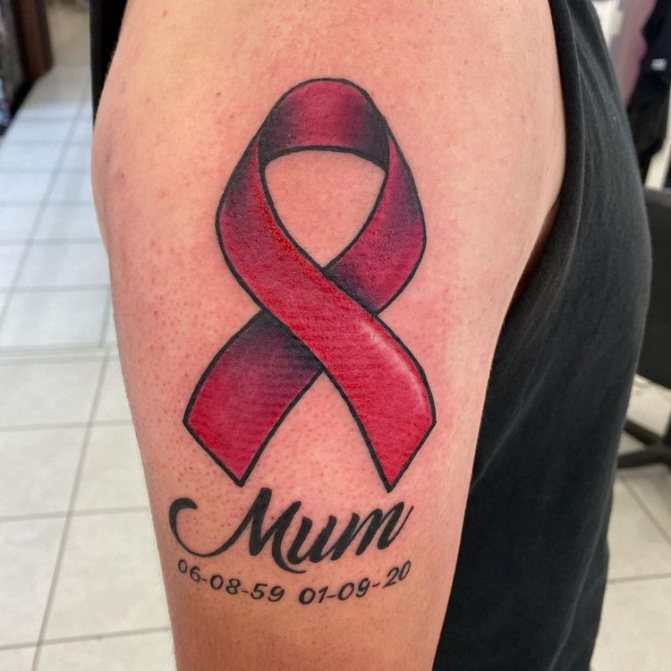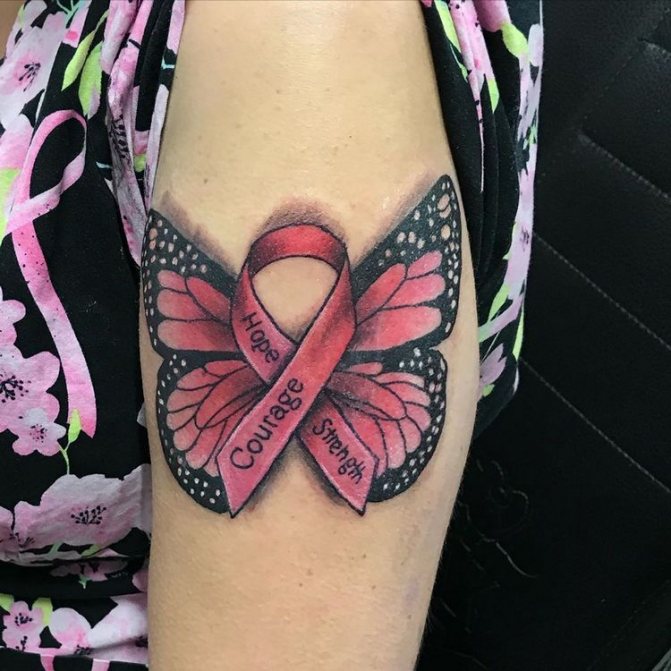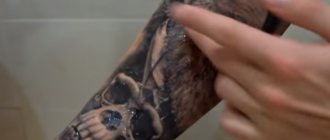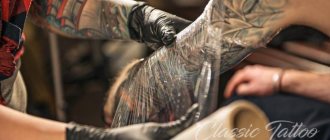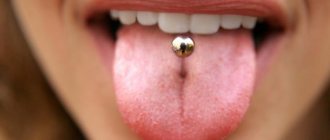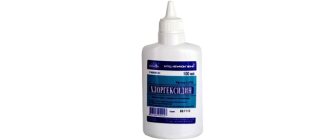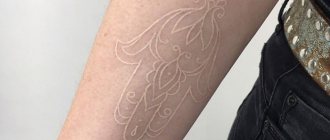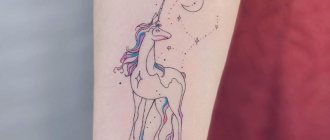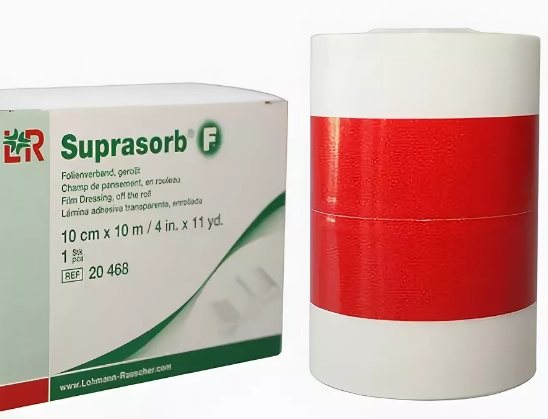
The tattooing procedure implies proper care afterwards, including rinsing, treatment, covering with a bandage for a few days. Today in tattoo salons there are modern materials that allow speeding up the processes.
Masters suggest using a special film for tattoo healing. It eliminates regular bandaging, perfectly fixed and protects the damaged area from infection.
Functionality of the healing film
A special film is a thin, soft material that is applied to the skin that has just been made to protect it from moisture, dust, dirt and various external influences. If the bandage makes a very bulky bandage, which allows you to comfortably wear only clothes of large size, then with the discussed material does not have to change the habitual life in any way. Even the hygienic procedures will not have to be abandoned.
Using a special adhesive, the coating is attached over a fresh tattoo. The film should completely hide it. It is also desirable to cut it to size with a large margin, so you do not have to worry about the fact that the edges of the accessory can peel off and germs will get on the wound.
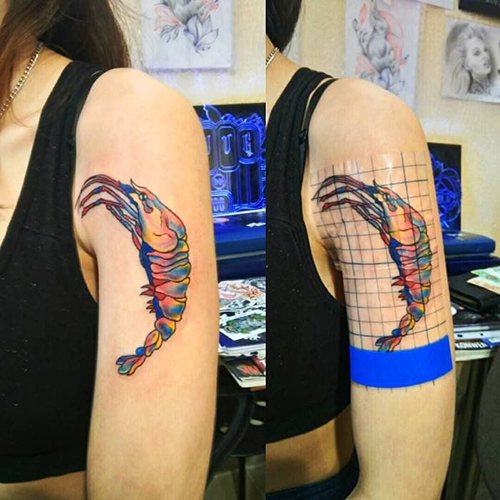

Since the coating is made of a special hypoallergenic material and has a very soft structure, it does not damage the skin when fixed. As a result, the film can be quickly and painlessly removed when necessary. It is very elastic and repeats all the curves of the body. Therefore, there will be no discomfort with any active movements.
Usually, the coating is glued for 4-5 days - almost immediately after the end of the drawing on the skin. For all this time it is allowed to refuse to use the healing ointment. But after the removal of the film again need to take care of a thorough comprehensive care of the tattoo.
Etiology and pathogenesis
The process of tattooing is the introduction of the ink pigment of the desired color into the dermal layer of the skin. Before injection, a special needle is dipped into colored or monochrome ink. If a tattooing machine is used, then the needle begins to make rapid reciprocating movements with a frequency of up to 100 times per second, piercing the skin and depositing pigment in it at a depth of about 1.5-2 mm. If the machine is not used, the translational motion is performed by the person himself. In any case, the tip of the needle penetrates the skin through the epidermis and enters the papillary layer of the dermis, where the ink particles accumulate.
As with any type of injury, the body's first reaction is to stop the bleeding that occurs by forming a blood clot - a clot. Then, edema occurs, followed by the migration of immune system cells (neutrophils and macrophages) to the wound area to phagocytose foreign substances - injected ink, cellular debris and bacteria that would be brought into the wound anyway. Fibroblasts are then activated, gradually repairing the injured collagen in the papillary layer of the dermis.
Interestingly, after injection, a certain amount of ink leaves the dermis through the vascular network and enters the lymphatic system, including the lymph nodes. Thus, these substances have some systemic effect on the body. With long-term observation of a tattoo, one may find that its ink gradually shifts into the deeper (reticular) layer of the dermis - this gives the inflicted image a faded and blurred appearance.
Varieties
Today, tattoo salons use 2 types of film:
- food-grade;
- membrane;
- disposable.
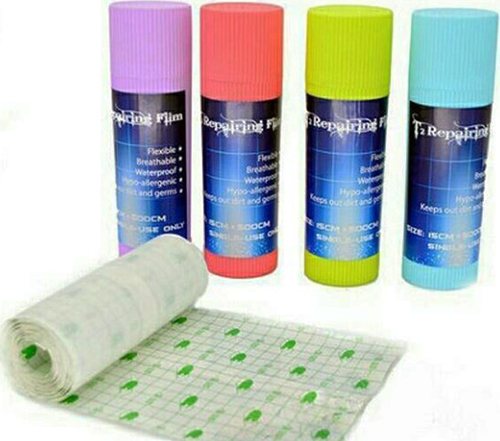

The first version has long been considered outdated. Normal food film creates a greenhouse effect, often moves out, easily torn, does not allow the skin to breathe, requiring regular replacement. Therefore, it is used only for economy purposes. Such film on a fresh tattoo can significantly prolong its healing period and worsen the skin condition.
A few years ago, manufacturers began to produce a special membrane coating. This is a film that is designed specifically for tattoo healing. It also prevents moisture from entering the wound, but it "breathes", is tightly fixed and does not slip thanks to a special adhesive, does not let the blood drip, does not tear, suitable for use even on "difficult" areas. For example, on the bend of the knee or elbow.
Healing tape for tattoos is sold in specialized stores. The most common coating in Russia is Suprasorb. This is a universal film, which is not recommended to glue only on deep wounds with a lot of liquid secretions. They are also called membrane dressings.
As for the disposable absorbent film, its master may recommend it for the first 24 hours to give time for the release of a large amount of suction. After 15-20 h the coating is removed and the membrane bandage is applied.
Price of the tattoo film
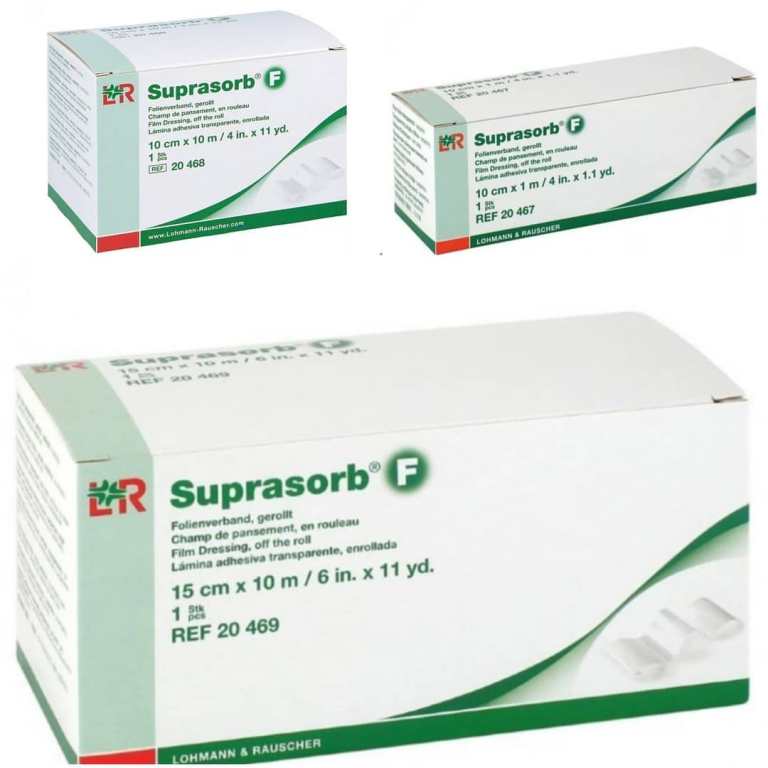

The cost of the healing film depends directly on its size, which comes in several varieties:
- 5*7 cm - from 40 rubles;
- 10*12 cm - from 80 rubles;
- 10*25 cm - from 250 rubles;
- 15*20 cm - from 150 rubles;
- 15*25 cm - from 150 rubles;
- 20*30 cm - from 350 rubles;
- 10*100 cm (roll) - from 590 rubles.
The form of release also differs - it may be sheets produced by the piece or roll. Suprasorb is convenient to buy by the piece because of the low price, but this format is only suitable for drawings of small size. For non-standard tattoos, it is more appropriate to purchase roll packs.
How to choose a film?
Since today the choice of films on the market is not great, the difficulties with their choice will not arise. The buyer only needs to find a special coating that is designed specifically for healing tattoos.
As a rule, such films are offered right in the tattoo parlor after the procedure. Often one accessory is even included in the cost of the procedure. The master also helps to glue the coating on correctly. Special films are also sold in thematic online stores. The main thing is not to try to make them from an ordinary bag or food film. Otherwise, there may be serious problems with the healing of the wound.
Where to buy protective film for tattoos?
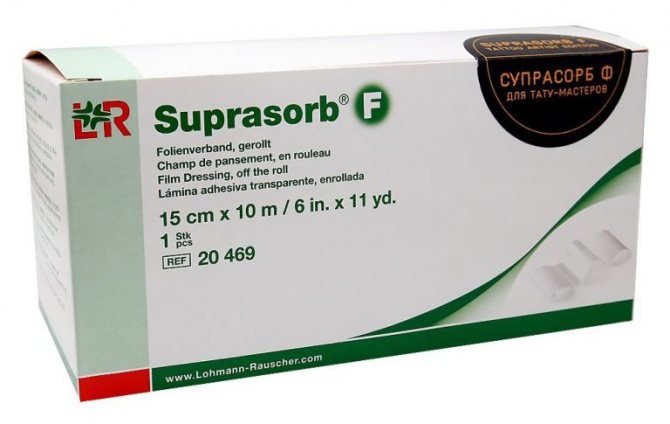

Suprasorb refers to the film post-operative surgical dressings. Therefore, if the master did not offer to purchase the material from him, it can be done:
- In another tattoo salon;
- on a specialized site;
- At the Internet drugstore;
- Pharmacies at the surgical departments of hospitals.
Principle of action
Tattoo healing film has a very simple and clear principle of action. It completely covers the whole damaged skin surface, thus protecting it from irritations, moisture, infections and even light damages. After all, even the usual touch of clothing can be painful for the area with the tattoo soon after its creation.
There is an assumption that with a special film the drawing heals 2 times faster. In fact - it's all just a publicity stunt. Both with the film and with the usual bandage dressing with proper care, the wound will heal about the same amount of time. But the bandage under discussion will make this period much easier and more comfortable for the freshly tattooed wearer.
If the bandages in the first days will need to change every few hours, to monitor their sterility, the degree of pressure on the wound, the film can simply be neatly correctly glued and "forget" about it for 5 days.
You can also hear from the manufacturer of such a product that it preserves the maximum brightness of the tattoo for the entire period. In fact, even the most expensive healing film is not able to retain the pigment inside the skin. This is why any drawing will become less vivid after some time than it was on the day of tattooing. This must be taken into account when choosing shades for it.
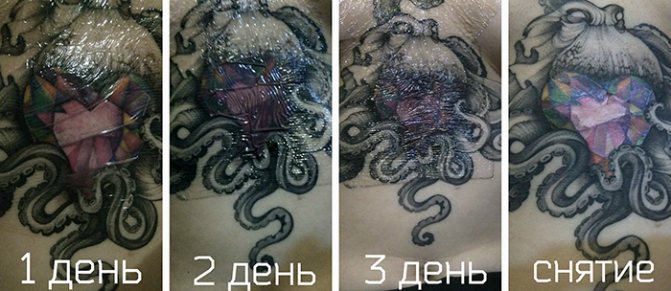

But the film retains under itself the sukruta, which is usually instantly absorbed into the bandage. This liquid contains in its composition substances that accelerate the wound healing process. They also reduce the likelihood of negative effects on the skin after the tattoo has been applied.
The meaning of pink ribbon tattoos
The most common and simple design consists of a braided pink bow. Usually the tattoo is on the top of the arm (on the shoulder) and means that the person either suffers from breast cancer, or he has already overcome it. Many people suffering from this disease decide to get tattoos to show the world their difficult struggle and tremendous will to live.
Based on this simple design, there are those who prefer to create other kinds of images, somewhat more complex and much more attractive than the original. Below we describe some ideas for these designs, and tell you which ones are the most popular.
Advantages and disadvantages
Special skin healing film is a real discovery in the field of cosmetology. After all, after its appearance, it became much easier to organize the proper care for a freshly made tattoo. But at the same time such a coating has not only its advantages, but also disadvantages.
Pros of the healing film:
- the material is completely transparent, so under it it is clearly visible how the tattoo heals and you can react in time to unwanted changes;
- to fix the film is used adhesive with a very soft, safe and hypoallergenic composition, which does not cause irritation - to glue the coating is easy and quite possible to do it yourself without the help of a master (of course, except for hard-to-reach places);
- when showering, the overlay perfectly protects the damaged skin from water, you can not deny yourself regular hygienic procedures;
- the covering is able to hold a healing, anti-inflammatory ointment or other means for the care of a fresh tattoo, if they have been appointed by the master;
- the film prevents moisture or microbes from entering the wound, but allows the skin to fully breathe;
- the coating is firmly fixed, but can be painlessly removed if needed;
- The film does not move or shift and is extremely difficult to tear;
- stick such a pad can be glued to any area of the face, body, limbs.
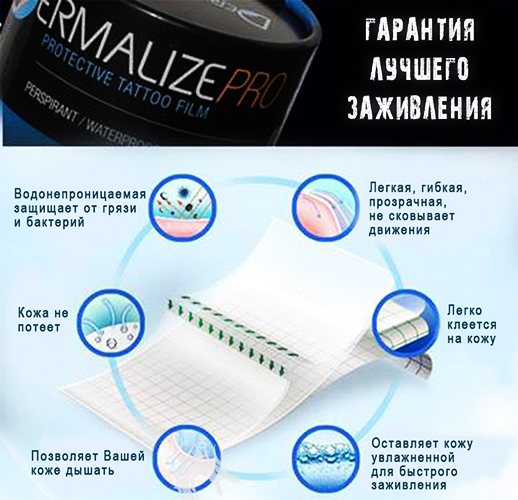

Advantages of the healing film for tattoos
Often the list of pluses also includes the versatility of healing films. In fact, they are not allowed to be used at all for all variants of tattoos. So, if the drawing is done with a strong anesthetic or with a dense "paint", a large amount of liquid secretions will accumulate under the coating. In the end, this can lead to inflammation or breach the tightness of the overlay.
The film used to heal the tattoo also has its disadvantages:
- the coating can easily peel off under certain conditions (for example, if it was not glued correctly, if the person actively twists while sleeping, the first day too much fluid was released from the wound);
- under the transparent film the wound and the accumulated around the blood is clearly visible, and it is not the most pleasant picture for the surrounding people and the owner of the tattoo;
- If the coating comes off even by a couple of millimeters, it will have to be urgently removed, the wound will have to be thoroughly cleaned and the overlay replaced, otherwise there is a risk of infection entering the damaged area;
- The cost of the film is much higher than conventional bandages.
Despite the impressive list of disadvantages, no worthy alternative to the discussed coating has yet been created. To date, the healing film is the most convenient option for the protection and care of freshly made tattoos.
Different variants of tattoos with pink ribbons
The designs associated with this type of tattoo are very varied, and each person can add one or more more elements if they wish to make the tattoo more meaningful. What you can do:
- You can add a name, date of birth and date of cancer treatment;
- Some people add the last name of a loved one who died of breast cancer;
- Another option is to place a pink ribbon inside the heart;
- Adding words to the pink ribbon is another of the most popular solutions;
- The pink ribbon can be decorated with another ribbon, in the form of butterfly wings;
- If a person is very religious, he can combine the pink ribbon with a cross;
- You can also add wings and a halo to the ribbon.
Recommendations for use
To avoid problems with the healing of the pattern made on the skin, you need to act strictly according to the following scheme when sticking the tape:
- First, you will need to wait until the damaged area of the skin stops bleeding - this will take about an hour. Many specialists consider that it is optimal to glue the film after a day or so after the done tattoo in order to decrease the allocation of sukrasnitsa, and all this time to walk with an open wound, but carefully to preserve it from contamination. At the first stage a disposable absorbent film can also be glued on.
- The skin should be washed with soap and water, wiped dry, and the area around it should be treated with any special alcohol-containing substance that will allow the coating to adhere tightly and not peel off.
- If the first 24 hours without a film did not stand, then after about 15-20 hours you will need to change the coating. There will be a large amount of suds accumulating underneath. The skin at this stage will require additional washing with soap and water and a good drying. The treatment around the wound is repeated.
- Then the film can be worn for up to 5 days.
It should be remembered that the coating will only hold on smooth skin. If there is hair on the treated area, you will need to remove it beforehand. This will also reduce the discomfort of removing the film.
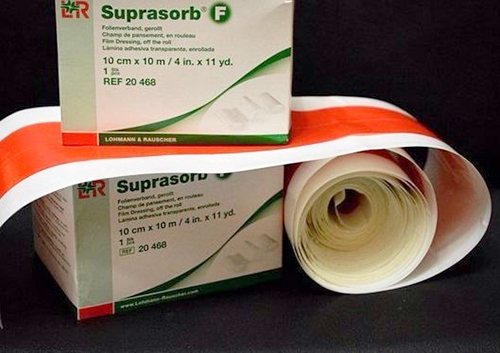

The film should cover not only the tattoo itself, but also the area around it - protrude about 2.5-3 cm beyond the borders of the figure. If the tattoo is very large and one standard overlay is not enough, then 2 or 3 should be used. The films or their parts are overlapped by about 1.5 cm.
If you are very active in the secretion of blood, an absorbent dressing can be glued to the wound under the film. It will absorb the fluid, but it will hide the damaged skin.
Clinical manifestations
Professional tattoo ink usually consists of a mixture of organic pigments, water and isopropyl alcohol. Interestingly, their manufacturers are not required to disclose the exact chemical composition of their products, despite their potential systemic distribution.
Black pigment is usually made from particles of coal (soot). It may contain polycyclic aromatic hydrocarbons (PAHs) in a range of concentrations, which some papers have reported to be carcinogenic, mutagenic, and may carry other skin health risks. In addition, people may experience adverse reactions: photosensitivity, itching and bulging of the tattooed skin in relation to the surrounding surface. Such reactions are especially common with black or red professional inks.
Household (amateur) tattoo pigments may contain not only professional components but also ballpoint pen fillers, printer's ink, ink or soot from burned plastic utensils and other materials. In these inks, the carbon (if present) is not stabilized by iron oxide, so after a while they take on a characteristic bluish hue. For this reason, most household tattoos are blue in color (Fig. 2). Cigarette ashes, black shoe polish, and the combination "water + shampoo + witch hazel + vodka + mouthwash (listerine)" have been reported as tattoo pigment.
Domestic tattooing can be applied with a pre-purchased tattoo machine. However, quite common is the "manual padding" using three or four sewing needles or from syringes attached to a long match or stick. Sometimes staples or shortened staples are used for this purpose. In addition, an ordinary electric razor is quite easily converted into a household tattoo machine.
Figure 2. A typical household tattoo (Pinterest)
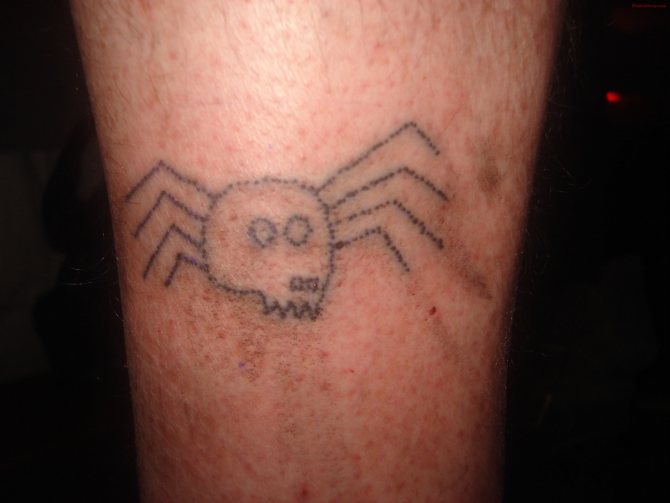

When and how to properly remove the film?
Tattoo healing tape must be properly both glued and removed. It is removed after 3-5 days, depending on the condition of the tattoo.
With the time of removal will help to understand the table:
| Type of bandage | Time of removal |
| Disposable | In 20-25 h |
| Membrane | After 5 days |
| With absorbent dressing | After 3-4 days |
Do not expect the wound to be completely healed by this time. Then you will need to continue to care for it thoroughly - already use healing ointments and other means recommended by a specialist.
To properly remove the film, you need to:
- Gently pick up the edge of the coating.
- Slowly and carefully pull the film off the skin. If there is an absorbent dressing, the coating is removed with it.
- Wash the wound thoroughly with soap and water.
- Apply a healing cream.
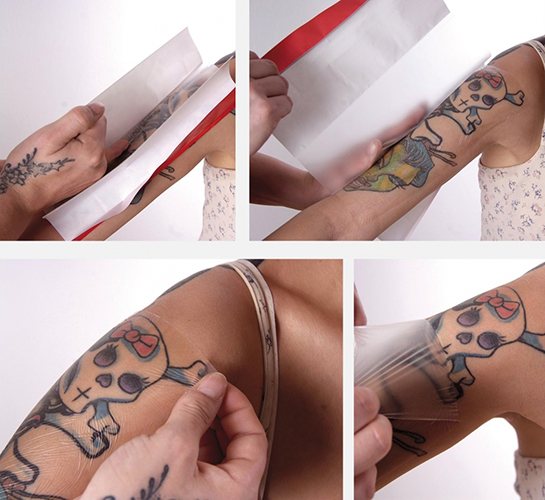

For about another 5-6 days after the removal of the film, the damaged skin area will flake a lot. Do not be frightened by this process - it is normal and completely natural. This suggests that the wound has been properly cared for, and active healing is taking place.
Differences between Suprasorb and food film
Previously, before the production of the medical bandage, the usual food film was used to heal tattoos. This low-cost method consisted in wrapping a film around the part of the body on which the drawing was applied, previously disinfected and lubricated with a regenerating ointment. But the environment and temperature formed under such a material, combined with the sucess, was a favorable breeding ground for the development of infection and dangerous pathogenic bacteria.
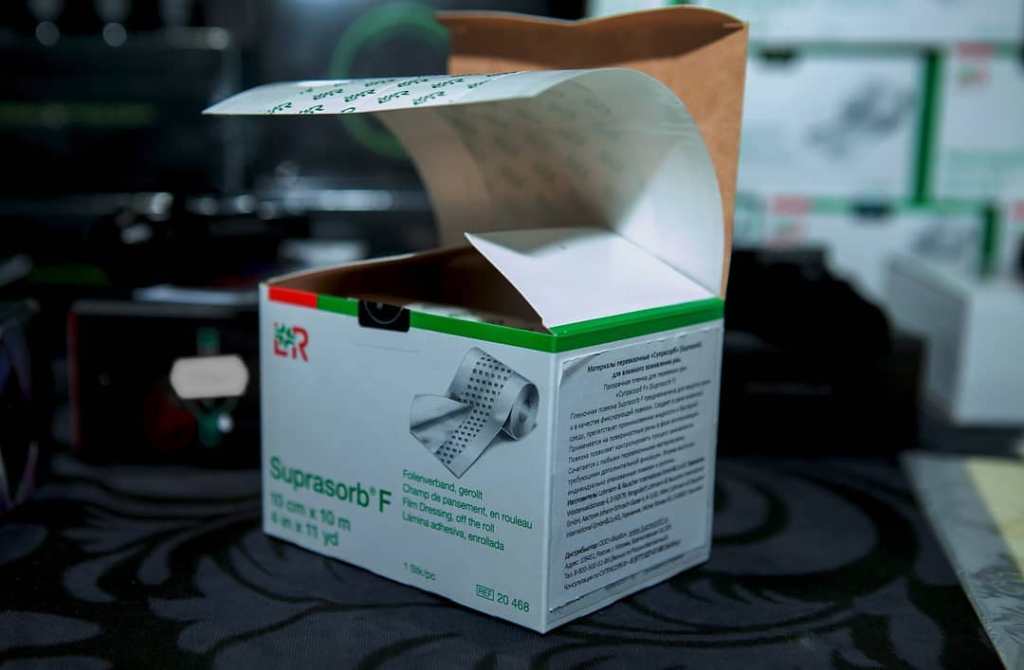

Unreliable fixation made the situation worse, injuring not only the skin, but also the quality of the pattern.
In contrast to Suprasorb healing, food film has the following disadvantages:
- the need for regular replacement: every 3-4 hours for 2 - 3 days;
- the healing time is at least 2 weeks;
- painful when removing it;
- greenhouse effect;
- discomfort from the lack of air access;
- unreliable fixation, slippage;
- risk of moisture ingress;
- possibility of bacterial infection and wound contamination.
In addition, there was often a violation of the integrity of the pattern caused by frequent treatment with antiseptic, soap and the dressing itself. This entailed new expenses for tattoo correction and restoration. That is why today masters recommend not resorting to such a "cheap" method in the hope of reducing the cost of tattoo care.
How long does it take to heal the wound
Tattoo healing takes place in several stages:
- After the drawing, there are microcracks on the skin, through which the bloodstream begins to secrete. This is the first stage. It is triggered by the lymphatic system - the skin is healed and cleansed.
- Next, the bloodstream disappears, the skin shrinks and becomes dry. At this time it is necessary to treat it actively with healing ointments.
- Then a crust forms on the drawing, and the skin begins to peel. This usually happens around day 6-7. The main thing is not to scratch the tattoo or tear off the crust because of the intense itching.
The exact terms of healing depend on the place of application, complexity, size of the drawing, as well as the individual characteristics of the human body. Thus, the fastest skin regenerates on the abdomen, buttocks and breasts. It takes about 7 days. And on places with a minimal amount of subcutaneous fat, the process stretches up to 2 weeks. For example, on the back.
If you create a large tattoo and at once in several stages, its healing is to be expected not earlier than in a month. Fully healed skin is smooth.
In order for the tattoo to heal quickly and properly, it needs to be carefully cared for. The easiest way to organize this process is to use a special healing film.
How long should I wear the tattoo tape?
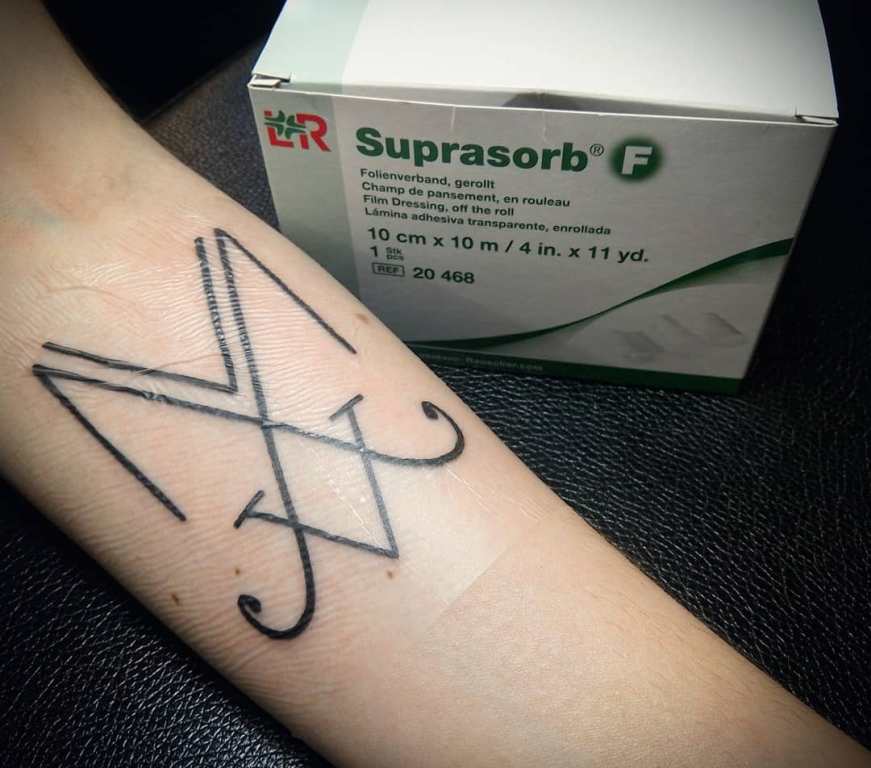

The breathing bandage is worn on the tattoo for 5-6 days.
Tattoo healing under the film goes through the following steps:
- the first day after the session, no change in the tattoo under the film is observed, the figure does not change its appearance;
- during the second day the active process begins, due to which the place of drawing noticeably warms up and begins to allocate sukrenitsa (secretions having natural color from pale to deep yellow), mixing with the rejected pigment, why under a film the dark mass is formed;
- On the third-fourth day after applying the tattoo, the dark liquid evaporates, the film shrinks, the surface looks like cracked;
- On the fifth-sixth day the bandage can be removed.
As a rule, the speed of wound healing in each person is individual and depends on the age and condition of the body, as well as external conditions. But the bactericidal and breathable properties of Suprasorb allow not only significantly accelerate, but also facilitate the regeneration process. Walking around with a film for more than 6 days is not advisable. Some people only need four days.
The third step of tattoo care
Gently wash the tattoo. Most artists recommend warm water and mild soap or an odorless antibacterial or antimicrobial liquid. Use your hands to gently rub the tattoo, removing any traces of blood, plasma, or leaking ink. Do not use a wash cloth, sponge to clean the tattoo as they may contain bacteria.
Do not hold tattoos directly under water. Wash indirectly, by splashing water over the tattoos with your hands. The stream of tap water may be too harsh for your new tattoo.
After you have thoroughly rinsed the tattoo, you should gently wipe it with a dry paper towel. Do not rub the tattoo as this may cause irritation. After the excess moisture has been removed, you should leave the tattoo to dry for 20 minutes.You should let your tattoo breathe each time you wash.
The fourth step of tattoo care
Apply an ointment. Once your tattoo is completely dry and your skin starts to feel tight, you can apply some ointment such as D-panthenol. Be sure to apply only a very thin layer, which is just enough to make the tattoo shine while it soaks into the skin. It is very important that you do not apply too much ointment or else you will make so that your tattoo will suffocate and and stimulate the growth of bacteria.
You should continue to apply the ointment after each tattoo wash for about 3 to 5 days, or until the tattoo begins to peel off. At that point, you can switch to regular, odorless lotion.
Do not use petroleum-based cleansers such as petroleum jelly, as they are too heavy and can clog pores.
